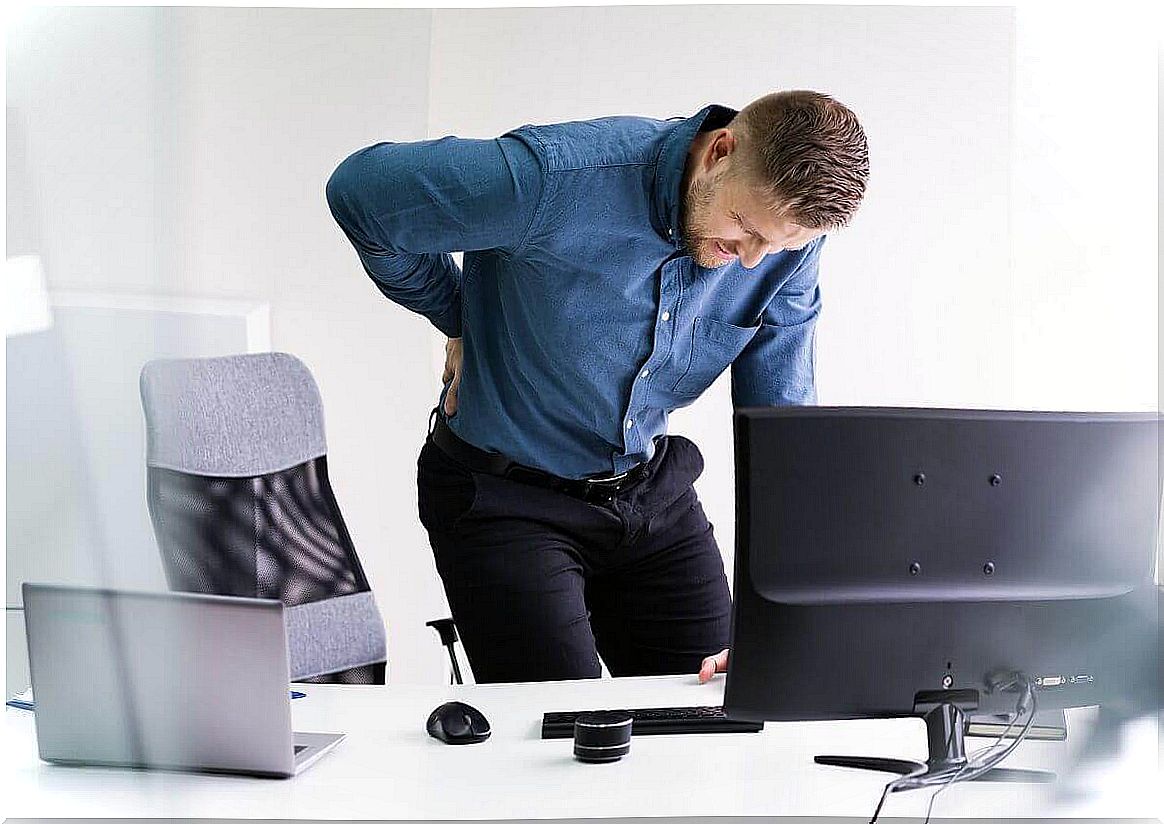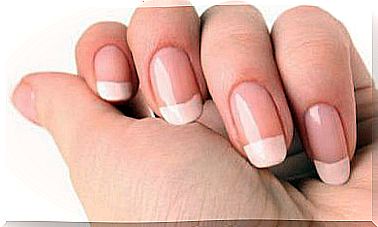Slipped Disc: You Should Avoid These 3 Fitness Exercises
What are the best fitness exercises for a slipped disc? Some are useful, some are more likely to make symptoms worse. What should be avoided? More about it here.

There are certainly fitness exercises that can help with the treatment of a herniated disc. However, one should always keep an eye on the complexity of this disease and therefore avoid certain physical exercises. As described in an article published in Current Reviews in Musculoskeletal Medicine , this can be a major cause of back pain.
At first it is often recommended to go to rest in order to avoid complications, but after a few days the muscles should definitely be activated again through exercise. This can reduce pressure on the intervertebral discs, maintain a healthy weight, and strengthen the spinal cord.
Nevertheless, it must be taken into account that not all sporting exercises are equally suitable for this. So which ones to avoid and why? We’ll tell you more about it in this article. Don’t miss this!
What exactly is a herniated disc?
To illustrate this, you first have to imagine that the individual vertebrae of the spine are separated from each other by cartilage-like discs. These act as dampers and prevent the individual bones from rubbing against each other. At the same time, they act as a connection and ensure flexibility and mobility.
The intervertebral disc consists of two parts, each of which has a specific function. Find out more details below.
- Inner gelatinous nucleus: it buffers the pressure between the individual vertebrae.
- Outer fibrous ring: the outer part of the intervertebral disc provides support and restricts rotation.
In the case of a herniated disc, the tissue of the inner gelatinous nucleus is displaced outwards through cracks in the outer ring of fibers. This can strain or pinch a nerve, causing pain or numbness.
The reasons for this can be as follows:
- Degeneration of the fibrous ring tissue
- Wrong movement or overexertion
- Injuries
- Overweight or obesity
- Work-related (if the work requires great physical exertion)
- Physical activity or exercise
Treatment often includes pain relievers, rest, lifestyle changes, and exercise. Surgical intervention may also rarely be necessary. In any case, caution is required, also with regard to some sporting exercises.

Fitness exercises to be avoided in the case of a herniated disc
An article published in the International Journal of Sports Physical Therapy points to the important role that sport plays in rehabilitation for a herniated disc. Of course, an individual training plan must be created here; however, it can generally be said that certain fitness exercises should be avoided.
1. Exercise exercises
First and foremost, exercises that place stress on the vertical axis of the spine should be avoided. This is the case with squats, where the knees are bent and crouched, also because these exercises are mostly performed with weight bars in the neck.
Weights should also not be carried overhead; such as the exercises Militay Press or front raises . Here the weight bar is gripped, raised to shoulder height and then pushed up until the elbows are straightened.
But why do these exercises have to be avoided? The back remains stretched as far as possible to compensate for the strain. And for this reason, it is also considered inappropriate for herniated disc patients.
Alternative fitness exercises
To relieve the lumbar region, it is recommended to do the exercise frontally. The weights are not behind but at the level of the collarbone. And of course, the practice must be avoided altogether while the injury is still healing.
However, those who want to build muscle should use a specific fitness device, the press. Here the weight is also carried by the legs, which reduces the load. Of course, you must always pay attention to the correct sitting position and the buttocks must not stand out.
As an alternative to the military press, you can train on the rowing machine, holding your torso at an angle and supporting yourself with one knee and one hand on a bench. So the spine is relieved.
2. Abdominal muscles
In the case of herniated discs in the lumbar region, the sciatic nerve is often affected. The pain that this creates extends from the waist down to the hips, buttocks and legs.
Now, most ab exercises involve torso flexing, creating tension in the lumbar region. This is the case with both the exercises that raise the body (sit-ups: upper abs) and those that raise the legs (lower abs).
The logical conclusion is that this abs workout should be avoided, be it with or without weight. Even exercises on special equipment are only recommended to a limited extent. Even if these ensure that incorrect movements are avoided, the trunk is nonetheless flexed.
Alternative abdominal training
The best alternative to exercising the muscles in the abdominal area is the forearm support. It strengthens the abductor and keeps the spine in a neutral position. There are several types of forearm support. The following are particularly gentle on the spine:
- Forearm support or plank: Face to the floor, the body in a horizontal position, the weight is held with the forearms and toes.
- Lateral forearm support: the body at an angle, propped up on one elbow. This position is held for a few seconds.

3. Fitness exercises: stretches, twists and turns
Stretching and twisting exercises as well as stretching the spine are ideal warm-up exercises. However, people with a herniated disc should be careful here.
Exercise that involves bringing your knee to your chest or touching your feet with your legs straight can make the injury worse. This is due to the fact that the corresponding posture is associated with greater tension and thus friction on the intervertebral discs. People with a herniated disc should keep this area mobile, but not subject it to any stress.
Alternative stretching exercises
Fitness exercises in the supine position, such as stretching the lumbar area, are an alternative that relieves stress on the spine. Here, the spine is strengthened and muscle work is performed while at the same time relieving tension from the lumbar area.
The oblique crunch, which is also performed while lying down, mainly stretches the legs. Lie on your back on a mat with your legs bent. Then the knees are drawn in alternately to the left and right.
Which fitness exercises are recommended for a herniated disc?
A herniated disc does not mean that one should be inactive. On the contrary, it is even important to exercise, albeit with precautionary measures. In any case, the two most important aspects should always be considered when exercising: little weight and no tension in the spinal area.
The most important thing, however, is to avoid sluggishness, as lack of exercise is counterproductive with herniated discs. Ideally, you create a training plan with a professional fitness trainer or physiotherapist and train under supervision in order to avoid incorrect positions. In addition, less stressful sports such as yoga, swimming, or Pilates are good choices.









